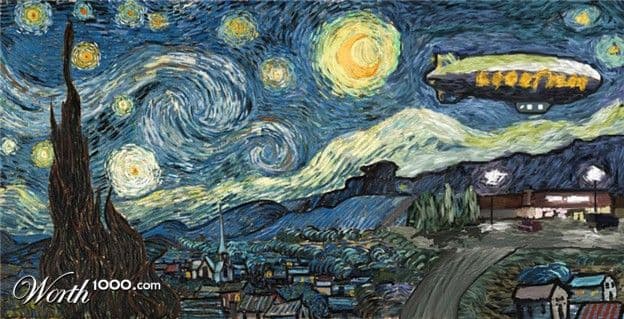On PRIMEX, and the Important Nuts and Bolts of the Magazine Industry
By Bob Sacks
Mon, Mar 16, 2015

BoSacks Speaks Out: On PRIMEX, and the Important Nuts and Bolts of the Magazine Industry
There is an unsung part of the magazine media industry that many of us rarely think or hear about, and yet a case can be made that this hard working section of the industry is the mighty engine that actually keeps us running.
We constantly read about creativity in our industry, about the art or editorial without which we wouldn't have a business. We read about newsstand issues, both the good and the bad. But the "magazine auto mechanic" who keeps the engine running is rarely in the forefront of industry discussions. Yet without a good, well distributed substrate, where would you put your creative content?
The somewhat hidden yet vital sectors of our business are the production departments. Having been a member of that elite group myself, I know the perils of the position all too well. Our job is to keep costs down to minimum and quality up to a maximum. Sounds easy, right? Other than those cost and quality conditions we only surface when things go wrong. What kind of person would actually take on that kind of responsibility? The fact that we get it right and near perfect 99.9% of the time is irrelevant when the pulp hits the fan of manufactured discontent.
Behind the scenes there are several organizations that we rarely hear about. Last week I gave a webinar for the Production Committee of American Business Media. (ABM), and yesterday I attended the annual Idealliance conference PRIMEX in New York City. Both have production and manufacturing at their heart. They are the nuts and bolts that hold together the content business.
My friend Joe Duncan, who is Senior Vice President at Leo Burnett, is the new board Chairman of PRIMEX now that Laura C. Reid, Vice President of Production, Hearst Magazines, has stepped down. From my point of view the industry owes Laura a huge vote of thanks for a tough job splendidly done. It is not easy to run a production pision of a major publisher and at the same time succeed so admirably as a chair of an industry association. If you are not in the production club, it is probable you don't know of the hard work and achievements of Laura and the Idealliance group. But take it from me, their work positively affects us all and makes it possible for our magazines of superior quality and reliability to be delivered on a consistent basis.
The first speaker was Dan Knotts, COO of RR Donnelley. He passionately spoke of print and media integration. He said that we all share the common experience of grappling with multi- channel communications. He also pointed out that many people believe that print can sometimes be discounted, but countered with the suggestion that print and digital create new possibilities.
Dan offered the concept that our behavior as consumers has changed and is still changing and these new forces and factors are shaping our industry in unexpected ways. The new consumer behavior is about device accumulation with strong expectations for timeliness, relevancy and personal gratification.
Then he discussed marketing and what he called communication overload. With all our connected experiences there is a communication power shift. We are now a distracted multi-channel nation, and marketers are on communications overload. He said that marketers have 3 seconds to get our attention or we move on. I agree with Dan that creating a 3 second attention gabber is a tall order in this age of communication everywhere.
He then gave us some stats such as, in America 90% of the public have cellphones, 58% have smartphones and 42% have tablets. We live in multi-screen households, and we continue to own more devices than we ever have before.
That being said Dan offered up that social communication is the new normal and every business has to adapt to that still evolving reality. We the consumers are now choosing when and where we want to get marketing messages. With print the possibilities are endless; for example, catalogs and magazines with mobile scanning QR codes add to the personalized experience. To be effective everything must work seamlessly together - Print, Digital, Web and Mobile. A message is connected to all devices and synced for consumption, from page to page and device to device.
According to Dan, print is blending with digital, and print improves sales. He noted that digital subscriptions are up 560% since 2011 and that there are 743 million total digital magazines subscriptions in 2014.
The next speaker was David Paterson, CEO of the Verso Corporation. He explained the complexities of merging paper companies into a vibrant and successful paper company. He was also wonderfully and refreshingly clearheaded about the usage trend of the last 5 years.
In my opinion sobriety is what we need now more than incessant cheerleading. We have a wonderful industry in transformation and which will still be worth billions no matter how our bar graphs look. Paper companies will make and sell paper. Printing companies will print on that paper and make magazines long into the future.
Here is one of the things I especially liked about this event. Nobody said nor felt they needed to say that print is not dead. As a member of the publishing community who attends more conferences than most, the Print isn't dead conversation should be.... Dead. Nobody needs it, and it doesn't do anyone any one any good. All that kind of talk is like the old question, "When did you stop beating your wife?" There is no correct response to that, nor is there one for print isn't dead. So we can stop beating up on our spouse, print, and we will all feel better in the morning.
One of the highlights for me was the presentation by David Parry, President TNG GP & The News Group. David's company is a wholesaler which delivers an enormous amount of our magazines to the retailers of the world. Listen to this: TNG is responsible for coordinating 53,500 retail partners and 67,000 orders per week. That works out to be 18 million copies delivered per week, every week, with a net worth about $105 million a week. He's got 83 facilities with over 2.2 million square feet and 1,000 trucks crisscrossing the country delivering magazines. In the last year his responsibility jumped from supplying 24,000 stores to 53,500 stores, which of course happened due do to the Source interlink bankruptcy. TNG also delivers magazines to army bases in 29 countries around the world.
David went into many details of the newsstand business and how to improve performance, but I am going to wait and deliver to you a more detailed analysis by interviewing David as soon as I can. His discussion and comments should be heeded by all.
Next up was a postal conversation delivered by Chris Lien, President, BCC Software. Yes, I agree with you all, there is little on the planet that is more edge-of-your- seat interesting than hearing about the post office and its intricacies. Chris delivered an animated and thoughtful executive summary on the key issues and trends of postal distribution. The truth is, it was interesting, necessary, and important. You may not need to know this stuff, but someone in your organization does need to know, understand, and navigate the postal system.
A departure from the nuts and bolts of magazine making was a conversation about branding, titled
HYPER CUSTOMIZATION- ENGAGING CONSUMERS WITH PERSONALIZED BRAND EXPERIENCES.
Delivered byRob Wallace, Managing Partner of Best of Breed Branding Consortium. Rob's passion is clearly not just branding, but the personalized, hyper-customized branding that exists today. The days of a single branded message impacting 100 million consumers is over, says Rob. Consumers now demand that brands engage them as inpiduals. And each inpidual is unique, requiring a hyper customized brand experience that is specific to each consumer need and yet is still "on brand."
New advances in digital printing and design algorithms now make it both possible and affordable for marketers to engage consumers on a truly inpidual basis. Rob shared case studies where brands like Coca-Cola, Absolute, L'Oreal, Heineken, and other leading brands have engaged consumers in a truly inpidual way. It is the rebirth of branding as we knew it. Retailing 4.0, as he calls it, points out that consumers now want experiences, not brands, and that the customer wants to be understood. Rob says we need to customize our message to the inpidual consumer. He had numerous examples, but one that was really intriguing was the name brand vodka that made 4 million bottles of its vodka, each bottle with its own unique label, which sold out at 4x the usual price. That is pretty amazing, if you ask me. One more thought from Rob about how millennials think, "Don't make me work for it and don't make me wait for it."
Last was a Publishing Technology roundtable with Keith Barraclough CTO & EVP Products, Next Issue Media; Jonathan Young, CTO, National Geographic Society; again Rob Wallace, Managing Partner Best of Breed Branding Consortium, and moderated by my friend Dick Ryan, Vice President of Sales & Marketing of Publisher's Press.
This is another session that I will delve deeper into on another day. There was a lot of interesting conversation here, but when the topic moved to article based distribution as a new and growing content delivery system, my attention was riveted. I did predict this very thing way back in 2007, but it is always nice as a futurist to actually be correct in prognostications and be around when they happen.
Dick talked about The Magazine Channel that Publisher's Press has been developing. He said that they started content management about five years ago. He said that Publisher's Press handles a lot of page files having developed a system to take content and convert it to XML files. These files can then be retrieved via topic instead of brand based distribution. This concept still makes perfect sense to me. Article based distribution is something we will all be talking about real soon. I am going to pursue this topic and interview Dick Ryan, so we can all hear the latest developments.
-------------------------------------------------------------
My thanks to David Steinhardt, President & CEO at IDEAlliance, and his hard working team, who do an amazing job coordinating the details of magazine media industry and keeping technology flame burning brightly as we move forward.
